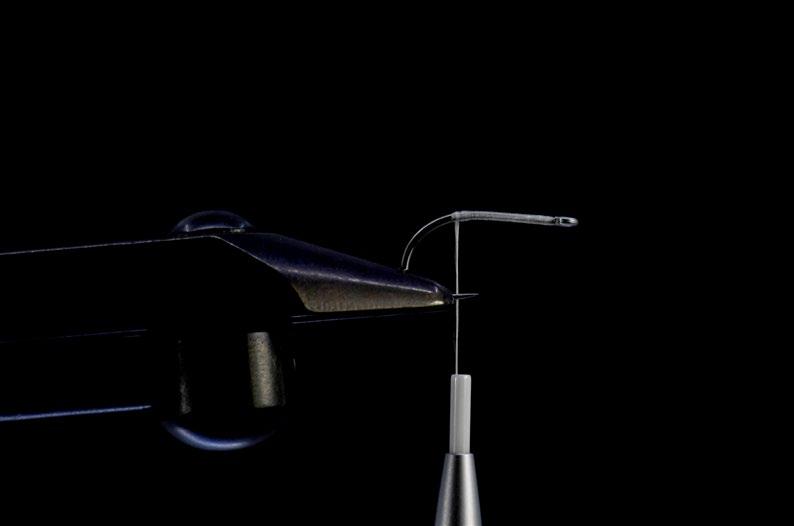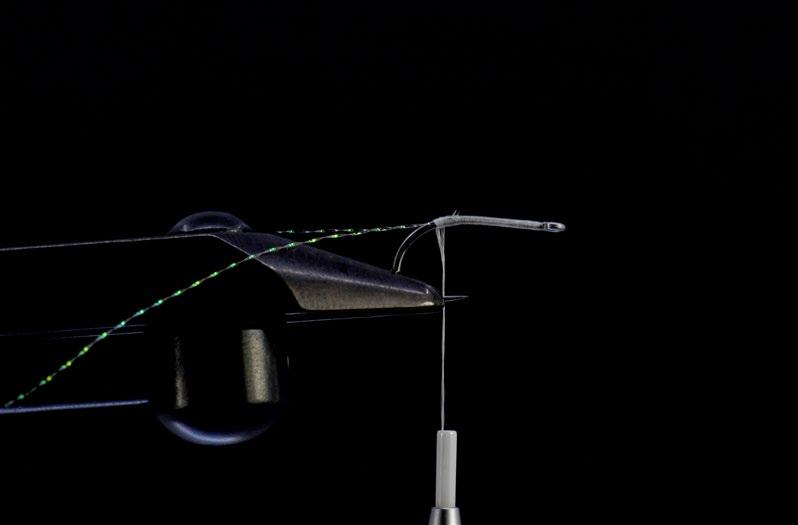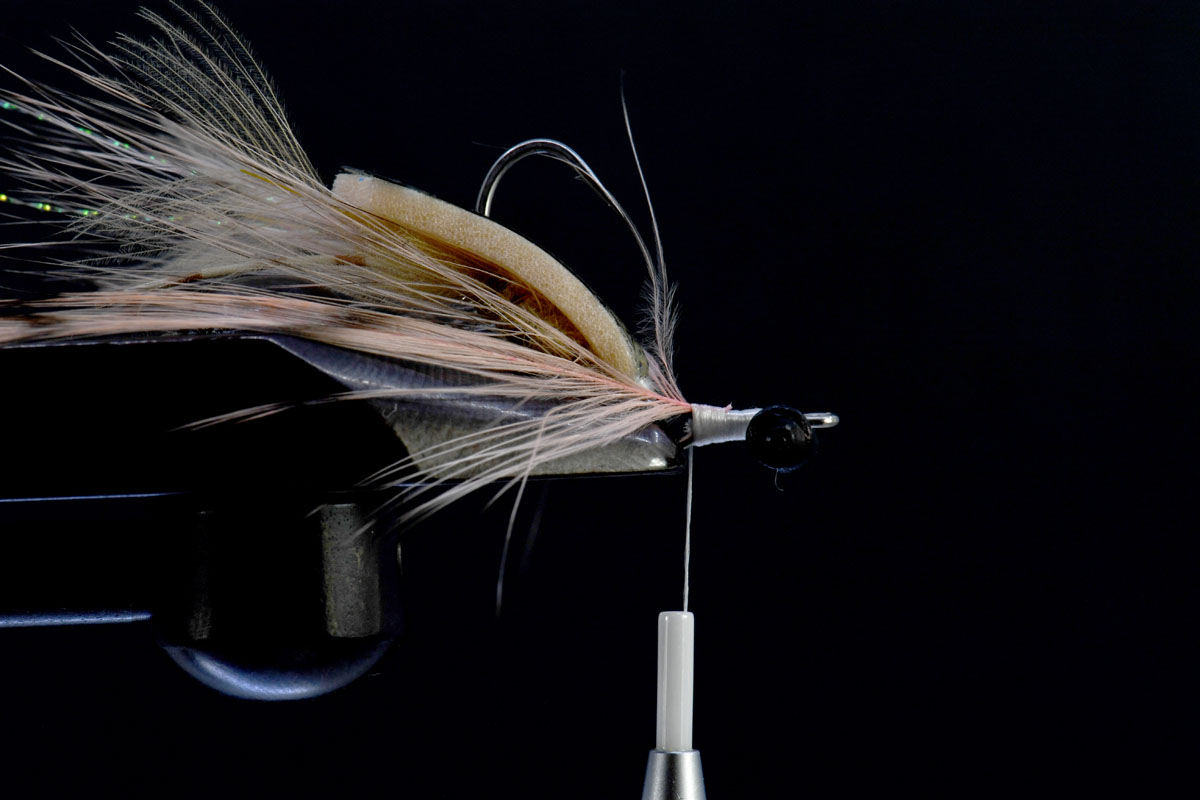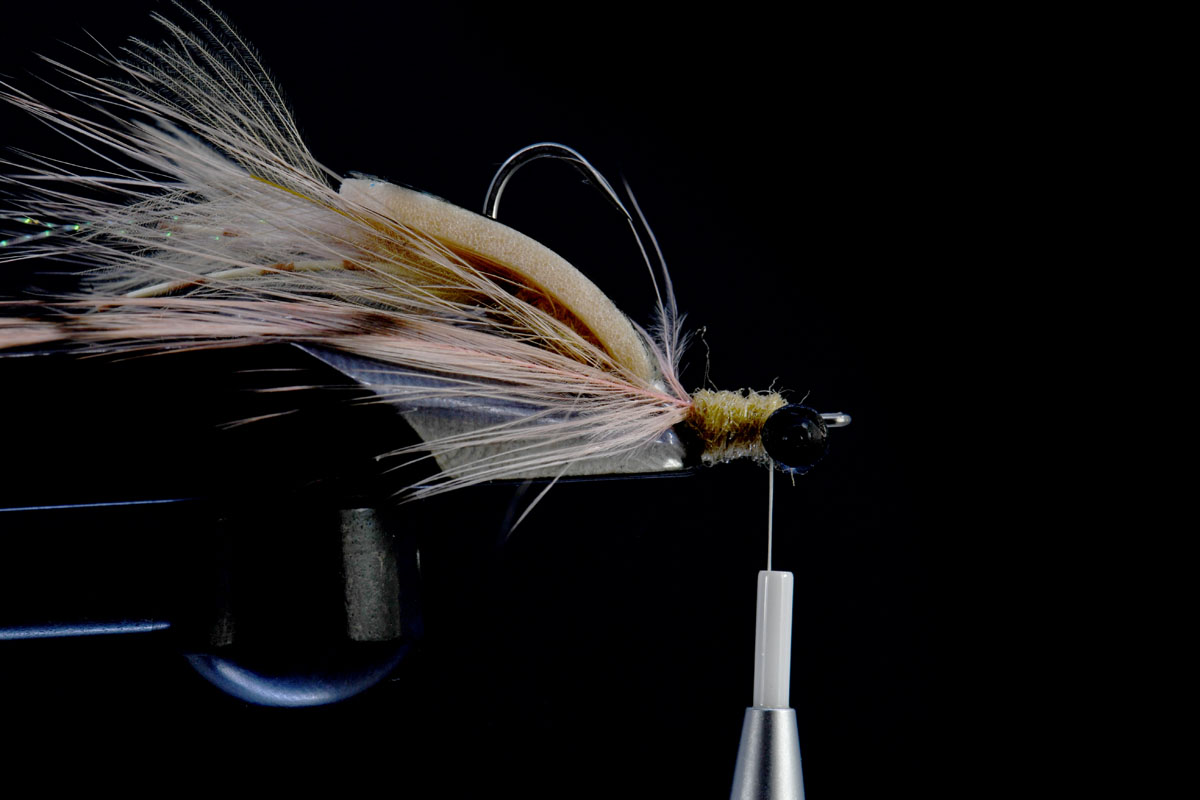
6 minute read
Fly Tying: The Joint Pop-Up Prawn
from FFE Magazine 2023
Fly Tying: The Joint Pop-Up Prawn
With just the right amount of weight and buoyancy, the jointed Pop-Up Prawn is designed to be fished on (or near) the bottom coming alive with even the smallest twitches. It’s a fly that works equally well for European species such seatrout, seabass, and brackish perch and tropical saltwater fish such as permit, bonefish, and triggerfish.
Rasmus Pabst Ovesen

There are thousands of different shrimp species to be found across the globe - in both freshwater- and saltwater habitats. Some of them are the size of grown men’s hands, while others are so small, they’re hardly visible. Some come in the most vivid of colours, while others blend stealthily in with their surroundings. Some of them live in the cold and dark depths of the ocean, while others cling to shallow, sunlit flats and shallows. What all of them have in common, however, is that they’re vibrant, fluttering crustaceans perfectly adapted to their local habitats, high on protein, and - not least - a highly sought-after prey item for a myriad of different predatory fish species.
Some of the pickiest saltwater fish on the planet, including triggerfish and permit, eat shrimp. And so do more homely species such as seatrout, brackish perch, and seabass. I have targeted them all and have found that, sometimes, these predators get very selective and particular when it comes to shrimp. And when they do, your fly - and how it moves and fishes, becomes the difference between success and failure.
For lethargic brackish perch clinging to the bottom during the winter months, a life-like shrimp pattern crawling along the bottom can be deadly. And the same goes for tailing permit, bonefish, and triggerfish on the sun-bathed flats of the Indian Ocean.
The Joint Pop-Up Prawn is designed to sink and crawl along the bottom with a front body - legs, antennae, head and all - that pops up and flutters. It’s tied using a small shank, precision-weighted with a pair of dumbell eyes, and a small saltwater hook mounted with buoyant foam that makes for an upside-down fly that doesn’t snag unto bottom structure.

The Joint Pop-Up Prawn has proven to be a killer for triggerfish - but it is also a lethal seatrout and seabass fly.
The fly has great movement due to the jointed construction and the very lively materials; the CDC feathers and spey hackles. And as a result - and much because of its realistic looks - it can be fished very slowly across the bottom and still be deadly efficient. It even fishes when you long-pause your retrieve as the foam joint and materials will keep pulsating with the turbulence of the water.
Obviously, the fly can also be fished pelagically - for seatrout, seabass, and other saltwater predator fish. When fished on a floating line with aggresive, short pulls, the fly will danse and flutter - legs, feelers, and pinchers bouncing and wiggling enticingly all over the place.

Materials
Hook: Light saltwater hook, Ahrex 280 or similar (#6-10)
Thread: Veevus G02 100D, White
Feelers/Antennae: Salmon-coloured spey hackle + Tan Crystal Flash
Legs: Centipede Legs, speckled white-brown
Claws: Tan CDC Feathers
Body: Tan STF Dubbing
Body Hackle: Salmon-coloured spey hackle
Shell: Salmon-coloured foam + Pro Sportfisher Shrimp Shell, Gen-II
UV-resin: Thin Loon UV-resin
Shank: Spawn Super Shank 9mm
Weight: Presentation Dumbell Eyes 1/50oz, XS

Fasten the hook securely in your vise.

Secure the tying thread and wrap it all the way to the hook bend.

Tie in two strands of tan Crystal Flash, 6 - 8cm in length.

Tie in a salmon-coloured grizzly spey hackle feather.

Do a couple of wraps with the spey hackle. Then tie it firmly in place.


Now, tie in two Centipede legs on either side of the hook. The legs should be 4 - 5cm in length.

Tie them in on either side of the hook.

Tie all materials backwards, including the spey hackle and any excess CDC fibres. Dub the tying thread with tan STF Dubbing.

Dub the whole hook shank, leaving a little space in front of the hook eye.

Now wrap the spey hackle along the full body length of the fly.

UV-glue a tan Shrimp Shell onto a piece of 3mm salmon-coloured foam.

Take the hook of the vise and thread the foamonto the hook. Then reinsert the hook in thevise.

Secure the shell/carapace with a few, carefulwraps of tying thread.

Now, trim all the excess foam and whip finishthe fly.

Pull the hook onto a small shank, and insert the shank in your vise. Firmly secure the shank, and make a solidbase of tying thread.

Now, tie in the dumbell eyes. They need to betied firmly in place.

Wrap the tying thread to the back of the shank and tie in a salmon-coloured spey hackle. (Smaller than the one previously used).

Dub the tying thread with tan, STF Dubbing.

Then, wrap the dubbing all the way to the dumbelleyes at the very front.

Wrap the spey hackle and secure it firmly behind the shank eye. Trim all excess and whip-finish the fly.

Using velcro or a dubbing tool, brush the dubbing and hackle, and force all the fibers downwards.

UV-glue the head and the fly is ready to find you a fish.










